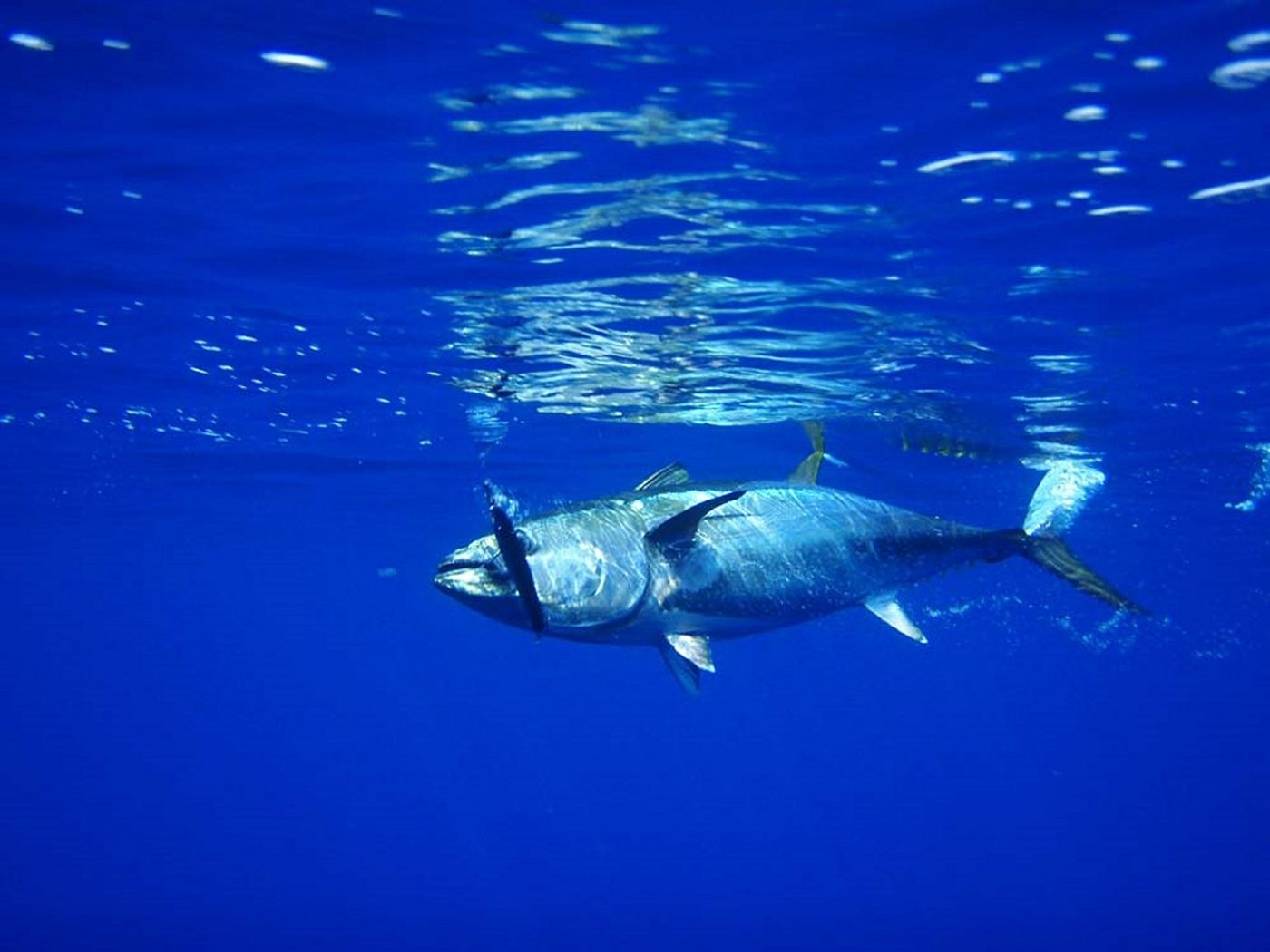Biological Hydraulic Systems Help Bluefin Tuna Control Their Fins
The most important tools a fish has for underwater movement are its fins. With these, a fish maintains stability and control despite swimming quickly and fighting currents.
As simple as a fin may seem, Stanford University researchers recently discovered that some fish cheat the system by using more than just bones and muscles to maintain fin rigidity as it moves to combat lateral forces.
Image Credit: Skeeze/Pixabay
Their study, published in the journal Science, reveals how bluefin tuna utilize a biological hydraulic system. With it, the sickle-shaped median fins on the fish’s body stay rigid even when the creatures are swimming at high rates of speed and fighting ocean currents.
“Animals are exciting sources of elegant engineering solutions in aero- and hydrodynamics. What we have discovered in these tunas is unlike other animal hydraulic systems. It’s a musculo-vascular complex that is integrating the lymphatic system, the skeletal muscles and fin bones,” study lead author Vadim Pavlov said in a statement.
“We’ve shown that in tunas and their fast-swimming relatives this complex functions to generate hydraulic pressure that provides fine adjustment of the shape of their fins. By expanding or retracting their dorsal and anal fins, they alter the physical forces generated by fins, allowing for maneuverability.”
Related: Fish solve problems by 'pooling' experience collectively
For the most part, giant tuna maintain slower rates of speed to conserve energy, but they can easily push 45 miles per hour with the right motivation, such as the presence of food.
When turning on a dime, the additional control and stability produced by these fins are critical. Their muscular systems alone aren’t powerful enough to precisely control the fins when strong lateral forces are acting upon them, so this is where the hydraulic power comes into play.
Given their massive surface area, not only do these hydraulic systems increase their turning accuracy, but they also conserve vital energy while and enable the fish to hunt for prey for longer periods of time.
Researchers made these observations while studying captive giant bluefin tuna at the Monterey Bay Aquarium. There, they watched and took note of the subtle movements as they swam around, something that's harder to achieve in the murky waters of the creature's natural habitat.
Subsequent anatomical examinations revealed fluid-filled cavities just below dorsal and anal median fins. These cavities led to further elaborate channel systems where the fluid could go to control the fins.
The team later generated computer models showing how the fluid moved from one part of the tuna to the other, facilitating fin movement and helping the fish move agilely despite its size.
Perhaps the next step is to figure out how we can learn from these biological hydraulic systems to improve modern robotics used both above and under the ocean’s surface.
“The natural mechanism of hydraulic control of fins could be very attractive in designing of new ‘smart’ control surfaces with changeable shape and stiffness,” Pavlov continued. “This could, for example, enhance the maneuverability of the air and underwater unmanned vehicles.”
Researchers will undoubtedly continue to study the mechanisms that make these tuna fin hydraulic systems possible while simultaneously trying searching to see if any other fish species exhibit similar or varying systems.
It should be interesting to see what we can learn not only from these mechanisms but also to see what other secrets are still lurking below the ocean's surface.
Source: Stanford University









